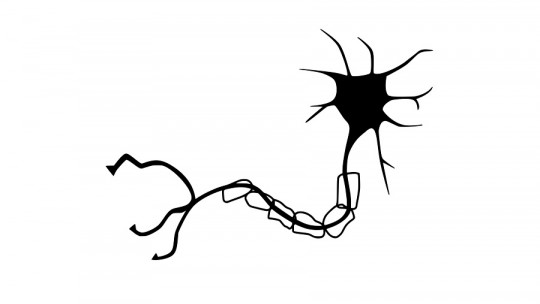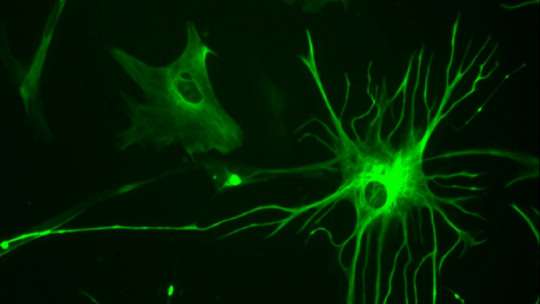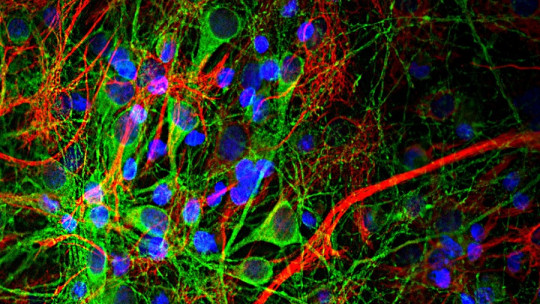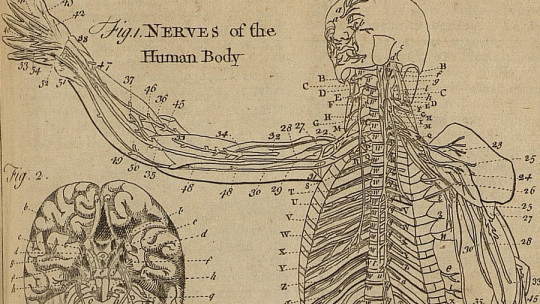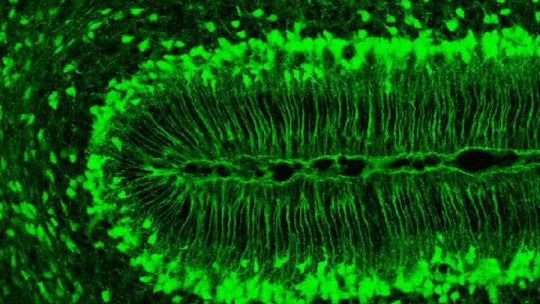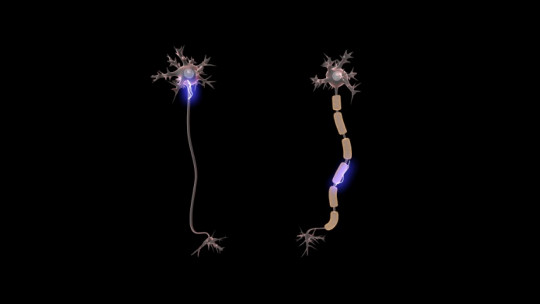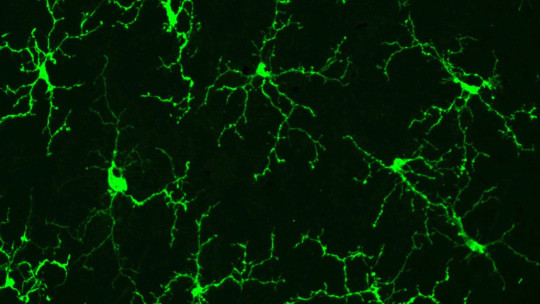Schwann cells of the peripheral nervous system They collaborate with neurons and play a fundamental role in the conduction of nervous impulses, as they are the cells responsible for covering the axons with an insulating substance that enhances the speed at which information is transmitted.
In this article we are going to see what Schwann cells are, what their functions are, how they grow and develop and what types of pathologies are related to them.
What are Schwann cells?
Schwann cells, also called neurolemocytes, constitute a specific type of glial cells located in the peripheral nervous system. Glial cells are cells of nervous tissue responsible for carrying out auxiliary and support functions of neurons (support, nutrition or guidance and control of neuronal migrations in the first phases of development, among others).
These cells are named in honor of the doctor and anatomist Theodor Schwann (1810-1882), father of the cell theory that postulated that all living beings are composed of cells and products produced by them, a theory that marked a paradigm shift. in the way of conceiving life in the 19th century.
Schwann cells maintain a close relationship with neurons since their origin in embryonic tissue, fulfilling a fundamental role in the proper guidance and control of axon growth Let’s see, next, what functions these cells perform.
Functions of these cells
Schwann cells perform the same functions in the peripheral nervous system (PNS) as other types of glial cells in the central nervous system (CNS). One of the main tasks of this type of cells is to act as support and guide in the regeneration processes of the peripheral nervous system after injury or axonal damage.
These cells appear to be unique in their ability to stimulate peripheral nerve growth and regeneration
Schwann cells, which are located in the axon terminals and synaptic boutons of neuromuscular junctions, provide physiological support to maintain ionic homeostasis of synapses (self-regulation and maintenance of consistency in their composition and properties).
Another of the fundamental tasks that these cells perform is to form a myelin sheath around the axons of the PNS, a function carried out in the CNS by their homologous cells, the oligodendrocytes.
Unlike the latter, which can form myelin sheaths in several different axons (extensions of the neuron responsible for conducting the nerve impulse), Schwann cells can only form a segment of myelin in a single axon, a mechanism that makes it easier for nerve impulses to spread faster.
The myelin sheath
Neurons in the peripheral nervous system transmit nerve impulses more or less quickly depending on whether or not their axon is covered by the myelin sheath, an insulating layer composed of proteins and fats. This sheath is not continuous, because the Schwann cells cover only 100 micrometers in length at a time, leaving tiny indentations between pod and pod, known as nodes of Ranvier
These nodes facilitate the transmission of the nerve impulse or action potential, allowing the electrical activity that passes through the axons to be maintained at an adequate speed until it reaches the cell body or soma of the neuron. This activity occurs “in jumps”, hence it is known as neuronal saltatory conduction.
Proliferation
Although the nature and origin of the factors involved in proliferation processes (the increase in the number of cells as a result of their growth and multiplication) are still unknown, it is known that Schwann cells proliferate during the development of cells. peripheral nerves in basically three contexts:
1. During normal peripheral nerve development
Along with the rest of the cells.
2. After a nerve injury
That is to say, due to mechanical trauma, neurotoxins or diseases that cause damage to myelin.
3. In Schwann cell tumors
This way, can proliferate anywhere in the peripheral nervous system as occurs with neurofibromatosis or acoustic fibromas.
Development
The development of Schwann cells begins in a first embryonic and neonatal phase of rapid proliferation, followed by the interruption of proliferation and their final differentiation. In their normal development, this type of cells go through two fundamental stages: migration and myelination
In their migration phase, Schwann cells are long, bipolar, with a composition rich in microfilaments and without a basal lamina or myelin that covers them. They are placed in the nerve, on the axons in their final position so that they divide into small groups of several axons surrounded by one or two Schwann cells.
Subsequently, the cells continue to proliferate and the number of axons each cell contains decreases. Simultaneously, larger diameter axons begin to segregate from their peers and become isolated into a single Schwann cell.
In this phase, the connective tissue spaces of the nerve have already developed better and the cell is now capable of assembling basal lamina The future maturation and myelination of the cells will depend on a correct assembly of this basal lamina.
Pathologies that involve this type of cells
The functionality and survival of Schwann cells as part of the peripheral nervous system can be compromised by multiple factors of diverse origin: infectious, immune, toxic, traumatic and tumorous.
Among the most common infectious factors are Hansen’s bacillus and Klebs-Löffler’s bacillus Although the alterations that these microorganisms cause in Schwann cells are not yet fully understood and continue to be the subject of study and research, indications have been found that an infection with Hansen’s bacillus could stop the proliferation of these cells and the myelination of the axons.
Among the most common metabolic alterations, diabetic neuropathy stands out , in which Schwann cells present an excessive accumulation of lipid bodies in their cytoplasm. This accumulation seems to reflect an alteration in lipid metabolism, producing demyelination, although it is not known whether it is primary or secondary to axonal alteration.
Tumor factors that affect Schwann cells are usually benign and are classified into four groups: Schwannomas, neurofibromas, plexiform fibromas and malignant fibromas. Furthermore, there are a large number of metabolic immune alterations that modify Schwann cells, causing demyelinating processes that are generally secondary to axonal injuries.

